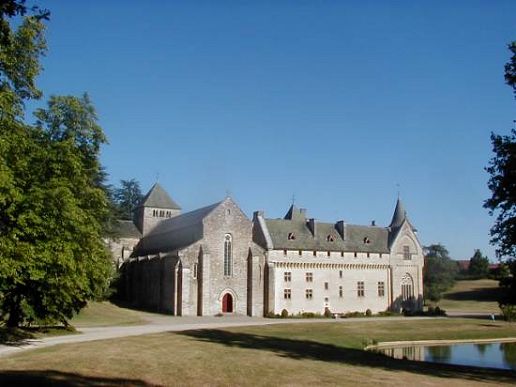Loc-Dieu Abbey on:
[Wikipedia]
[Google]
[Amazon]
 Loc-Dieu Abbey is a Cistercian
Loc-Dieu Abbey is a Cistercian
File:Abbaye de Loc Dieu - 01.jpg
File:Abbaye de Loc Dieu - 06.jpg
File:Abbaye de Loc Dieu - 07.jpg
cister.net
*Pictures from the sky
Photothèque Gaud
{{Authority control 1123 establishments in Europe 1120s establishments in France Religious organizations established in the 1120s Cistercian monasteries in France Buildings and structures in Aveyron Christian monasteries established in the 12th century Churches in Aveyron
 Loc-Dieu Abbey is a Cistercian
Loc-Dieu Abbey is a Cistercian abbey
An abbey is a type of monastery used by members of a religious order under the governance of an abbot or abbess. Abbeys provide a complex of buildings and land for religious activities, work, and housing of Christian monks and nuns.
The con ...
located near Martiel, 9 km west from Villefranche-de-Rouergue, in the department of Aveyron
Aveyron (; oc, Avairon; ) is a department in the region of Occitania, Southern France. It was named after the river Aveyron. Its inhabitants are known as ''Aveyronnais'' (masculine) or ''Aveyronnaises'' (feminine) in French. The inhabitants ...
in France
France (), officially the French Republic ( ), is a country primarily located in Western Europe. It also comprises of overseas regions and territories in the Americas and the Atlantic, Pacific and Indian Oceans. Its metropolitan area ...
.
History
Founded in 1123 in a place formerly called ''Locus Diaboli'' (Latin
Latin (, or , ) is a classical language belonging to the Italic branch of the Indo-European languages. Latin was originally a dialect spoken in the lower Tiber area (then known as Latium) around present-day Rome, but through the power of the ...
for "devil
A devil is the personification of evil as it is conceived in various cultures and religious traditions. It is seen as the objectification of a hostile and destructive force. Jeffrey Burton Russell states that the different conceptions of ...
's place") due to the large number of dolmens around it, it was renamed ''Locus Dei'' in Latin by the monks, which in French became ''Loc-Dieu,'' both meaning the "place of God".
Burnt down by the English in 1409, it was rebuilt in 1470, and the abbey was fortified.
The abbey was suppressed and its assets sold off as national property by the French government during the French Revolution
The French Revolution ( ) was a period of radical political and societal change in France that began with the Estates General of 1789 and ended with the formation of the French Consulate in coup of 18 Brumaire, November 1799. Many of its ...
in 1793. The Cibiel family bought it in 1812, and Cibiel descendants still live in it today.
The buildings were restored in 1840 (the east wing) and in 1880 (the south and west wings).
In the summer of 1940, paintings from the Louvre
The Louvre ( ), or the Louvre Museum ( ), is the world's most-visited museum, and an historic landmark in Paris, France. It is the home of some of the best-known works of art, including the ''Mona Lisa'' and the ''Venus de Milo''. A central l ...
, including the Mona Lisa
The ''Mona Lisa'' ( ; it, Gioconda or ; french: Joconde ) is a Half length portrait, half-length portrait painting by Italian artist Leonardo da Vinci. Considered an archetypal masterpiece of the Italian Renaissance, it has been described ...
, were hidden in Loc-Dieu to keep them safe from German troops.
The abbey and its large park are now open to visitors.
Architecture
*Church: built between 1159 and 1189, the church remains intact. This is one of the first Gothic buildings in southern France, designed by architects from Burgundy. Cistercian rules are followed, i.e. the greatest simplicity possible, with no decorations other than the stone and light. *Cloister and Chapter room: rebuilt in 1470, they replaced the previous Romanesque cloister. They present a strong Gothic style.Gallery
References
External links
* *More picturescister.net
*Pictures from the sky
Photothèque Gaud
{{Authority control 1123 establishments in Europe 1120s establishments in France Religious organizations established in the 1120s Cistercian monasteries in France Buildings and structures in Aveyron Christian monasteries established in the 12th century Churches in Aveyron